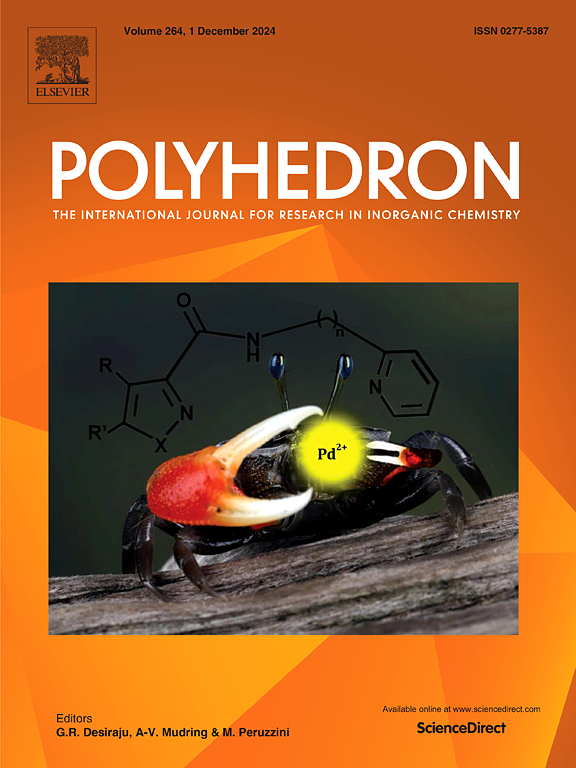Bonding and reactivity study of chalcogen adducts of N-heterocyclic Silylene and Germylene: Fisher-carbene like bond polarity in heavier main group adducts
IF 2.4
3区 化学
Q2 CHEMISTRY, INORGANIC & NUCLEAR
引用次数: 0
Abstract
The chalcogen-stabilized N-heterocyclic carbenes, Imidazolin-2-chalcogenones (NHC=X, X = O, S, Se), represent an important class of stable compounds with wide applications in catalysis. However, the chalcogen-stabilized N-heterocyclic Silylenes and Germylenes (NHE=X, E = Si, Ge; X = O, S, Se), which could potentially lead to a new class of low valent compounds, are not yet isolated, while their Lewis-base-supported adducts are. Therefore, the nature of the Si/Ge-chalcogen (NHEE = X) bond is investigated and compared to the NHCC=X bond using quantum mechanical methods to elucidate the differences in the stability and reactivity. The NBO, AIM, and MO analyses suggest that the NHEE=X bond in the heavier analogues exhibits a Fischer-carbene like bond polarity for the main group adduct, and the polarity decreases going down the group. The EDA-NOCV (Energy Decomposition Analysis combined with Natural Orbitals for Chemical Valence) analysis confirms that the bonding in NHE=X except for NHGe=Se can be best represented by considering one electron sharing and one donor–acceptor interaction between positively charged NHE fragment (NHEE+) and negatively charged chalcogen, which confirms the polar nature of the E─X bond. On the other hand, the preference for the singlet electronic state is translated in double donor–acceptor interactions between two neutral fragments (NHGe and Se) in NHGe=Se. In addition, an in-plane hyperconjugative NHEE ← X (π\parallel) interaction is also observed. Our analysis further confirms the preference for ammonia addition to the Silylene/Germylene centre, thus corroborating the experimentally reported reactivity of Lewis base stabilized NHE=X.

求助全文
约1分钟内获得全文
求助全文
来源期刊

Polyhedron
化学-晶体学
CiteScore
4.90
自引率
7.70%
发文量
515
审稿时长
2 months
期刊介绍:
Polyhedron publishes original, fundamental, experimental and theoretical work of the highest quality in all the major areas of inorganic chemistry. This includes synthetic chemistry, coordination chemistry, organometallic chemistry, bioinorganic chemistry, and solid-state and materials chemistry.
Papers should be significant pieces of work, and all new compounds must be appropriately characterized. The inclusion of single-crystal X-ray structural data is strongly encouraged, but papers reporting only the X-ray structure determination of a single compound will usually not be considered. Papers on solid-state or materials chemistry will be expected to have a significant molecular chemistry component (such as the synthesis and characterization of the molecular precursors and/or a systematic study of the use of different precursors or reaction conditions) or demonstrate a cutting-edge application (for example inorganic materials for energy applications). Papers dealing only with stability constants are not considered.
 求助内容:
求助内容: 应助结果提醒方式:
应助结果提醒方式:


